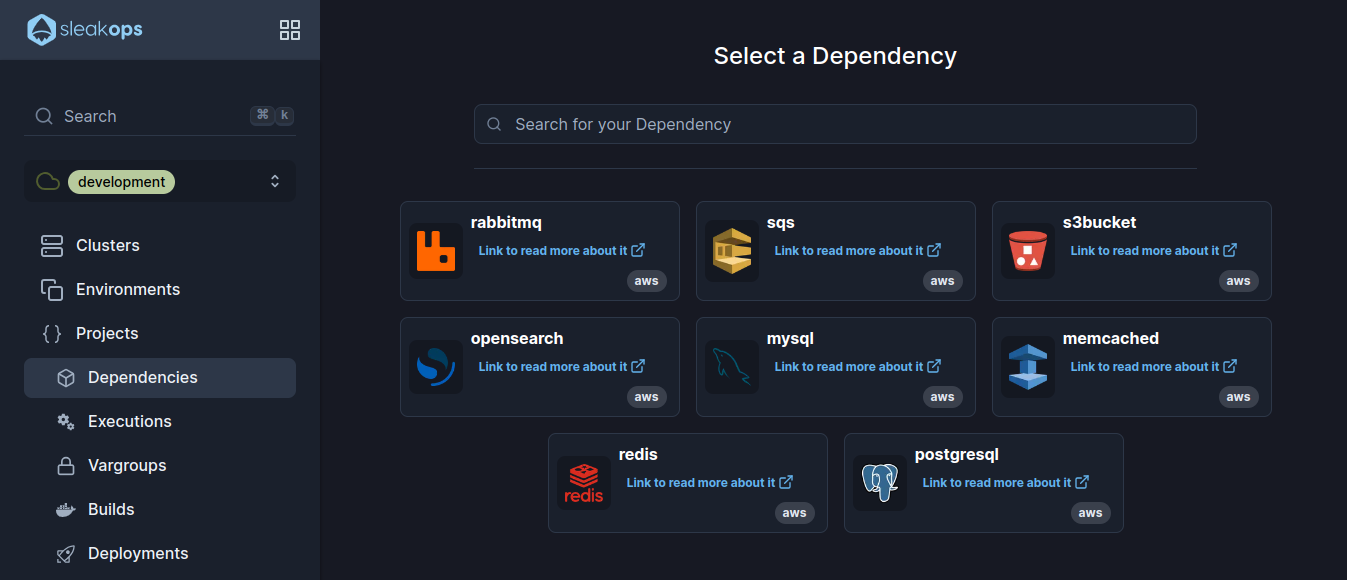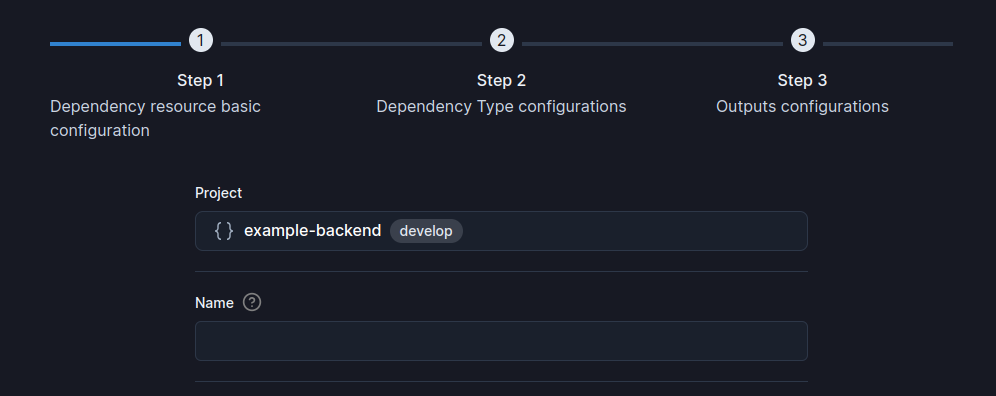Dependencies: Integrating Databases, Caching, and Messaging Services
A Dependency in the context of SleakOps refers to any external infrastructure or service that your application relies on to function effectively. These dependencies include a variety of AWS services and resources that your application integrates with to enhance its capabilities and performance.
FAQs
What types of dependencies are included in SleakOps?
Here’s the updated list of dependencies included in SleakOps:
- Databases
- Amazon RDS: Managed relational databases such as MySQL, PostgreSQL, and others.
- Caching Services
- Amazon ElastiCache for Redis: In-memory data store for caching frequently accessed data.
- Amazon ElastiCache for Memcached: In-memory caching service for improved performance and reduced database load.
- Object Storage
- Amazon S3: Scalable and secure object storage for storing and retrieving any amount of data.
- Search and Analytics
- Amazon OpenSearch: A powerful search and analytics engine for exploring and visualizing data, enabling real-time insights and decision-making.
- Message Queuing
- Amazon SQS: Fully managed message queuing service that enables you to decouple components and enhance application scalability and reliability.
- RabbitMQ: A widely used open-source message broker that facilitates reliable messaging and integration between application components.
These dependencies integrate seamlessly with SleakOps, providing a comprehensive suite of AWS and open-source services to enhance your application's functionality, performance, and scalability.
Can I modify dependency configurations after initial setup?
Yes, you can update dependency configurations at any time. Make sure to save any changes in the SleakOps interface to apply the updates.
Can the same dependency be used for multiple Projects?
At the moment this is not possible, you need one dependency per each project.
How do I delete a Dependency?
By accessing the Dependency Listing and clicking the delete option.
What happens when I delete a dependency?
By deleting a dependency, SleakOps will remove all the information related to it and all what is related to it will stop working. To solve that SleakOps create a Deployment in PENDING_APPROVAL status, that must be run manually ASAP to stop the downtime. In case you delete a database, SleakOps will generate a final snapshot before its deletion.
Lets add a Dependency for your Project
1. Navigate to create Dependency section
Into the Left Pane, access Dependencies option and then, at the top right corner, click on the Create button.

2. Select the kind of dependency you want to create

3. Select the kind of dependency you want to create
In Sleakops all dependecies start with the same step. So, complete these attributes and click Next to continue.
| Setting | Description |
|---|---|
| Name | Identify your Project. |
| Project | Select between the existent projects. |

4. Follow each dependency guide
To move forward choose between the following guides.
S3 Bucket. MySQL. PostgreSQL. Redis. Memcached. OpenSearch. SQS.